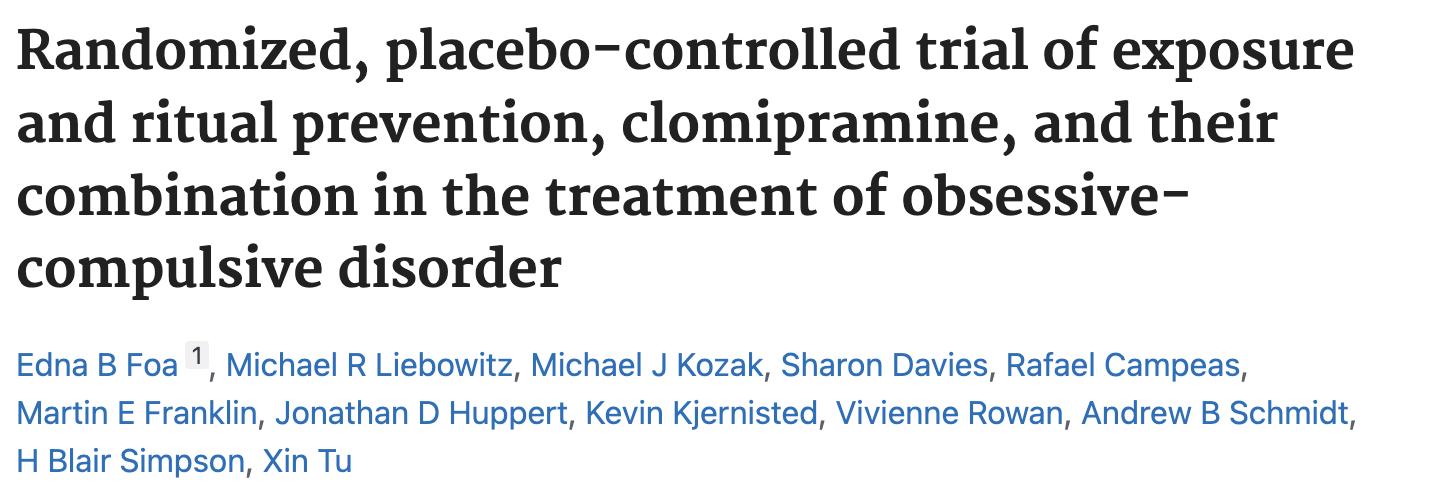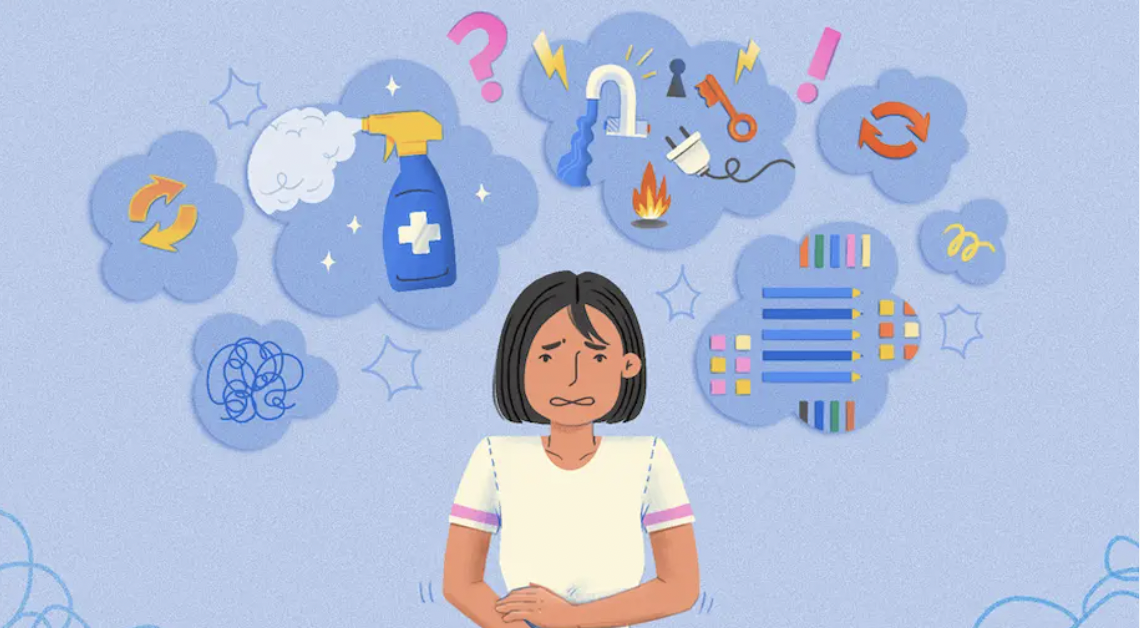Exposure & Response Prevention: The OCD Therapy That Outshines Medication
A double-blind, placebo-controlled trial published in the American Journal of Psychiatry (January 2005) pitted Exposure & Response Prevention (ERP) against clomipramine (a tricyclic antidepressant) and the two in combination.

Dr. Wasib Malik
Psychiatrist and Pharmacotherapy Expert

Takeaway: Practicing ERP is the single strongest move most people with OCD can make.
ERP (Exposure and Response Prevention) didn’t just hold its own—it won. After 12 weeks:
- 62 % of all patients starting ERP responded, and when they finished the full course the success rate climbed to 86 %.
- Adding clomipramine nudged response to 70 %, but the edge was small and came with medication side-effects.
- Clomipramine alone helped just 42 %.
- Placebo? A mere 8 % got better.
Why Should You Care?
Because skipping ERP could mean leaving a ~20-40 % higher chance of real relief on the table compared with medication alone.
The Double-Blind ERP Study

This is not a small pilot—it's a rigorously designed, multi-center, randomized, double-blind trial that still anchors modern treatment guidelines. Its publication in a top-tier journal with strict peer-review makes the data highly dependable
The Clinical Data
- Participants: 122 adults, DSM-IV OCD, baseline Yale-Brown scores in the “moderate–severe” range.
- Primary outcome: ≥ “Much improved” on the Clinical Global Impression; secondary: mean Yale-Brown score drop.
- Results at Week 12:
- ERP: 62 % responders (86 % among completers).
- Clomipramine: 42 % responders.
- ERP + Clomipramine: 70 % responders; faster early gains but no long-term advantage over ERP alone.
- Placebo: 8 % responders.
Study Design: How They Figured It Out
- Randomization: 4 parallel groups—ERP, clomipramine, combo, placebo.
- Blinding: Pills double-blind; therapists for ERP blinded to pill status.
- Interventions:
- ERP—4 weeks intensive daily exposure & ritual prevention + 8 weekly maintenance sessions.
- Clomipramine—up to 250 mg/day for 12 weeks.
- Sites: Three academic centers, each expert in either pharmacotherapy, ERP, or both.
- Assessment schedule: Baseline, weeks 4, 8, 12; independent raters.
Why This Study Changed My Practice
“I used to reach for a prescription pad first. Now I reach for an ERP referral list.”
Seeing ERP outperform medication flipped my treatment ladder:
- Start with ERP whenever possible.
- Layer clomipramine (or an SSRI) only if symptoms are crushing or access to ERP is limited.
- Re-frame meds as a helpful boost, not the cure.
Patients like hearing that progress comes from skills they build, not just pills they swallow.
What Patients Should Know
- ERP is action-oriented—you face triggers gradually while resisting compulsions.
- Improvement often starts within 4–6 weeks.
- Medication can soften anxiety but doesn’t teach the brain new habits the way ERP does.
- Finishing the full course matters—people who complete ERP hit 86 % success.
- ERP is officially listed as a first-line OCD therapy by the American Psychiatric Association.
Final Thought
ERP gives you tools that last a lifetime; medication can be a useful ally, but it isn’t the hero of the story. If OCD is running your day, look for a therapist trained in Exposure & Response Prevention—then step, one manageable exposure at a time, toward the life you want.
More Articles

Exposure & Response Prevention: The OCD Therapy That Outshines Medication
A double-blind, placebo-controlled trial published in the American Journal of Psychiatry (January 2005) pitted Exposure & Response Prevention (ERP) against clomipramine (a tricyclic antidepressant) and the two in combination.





